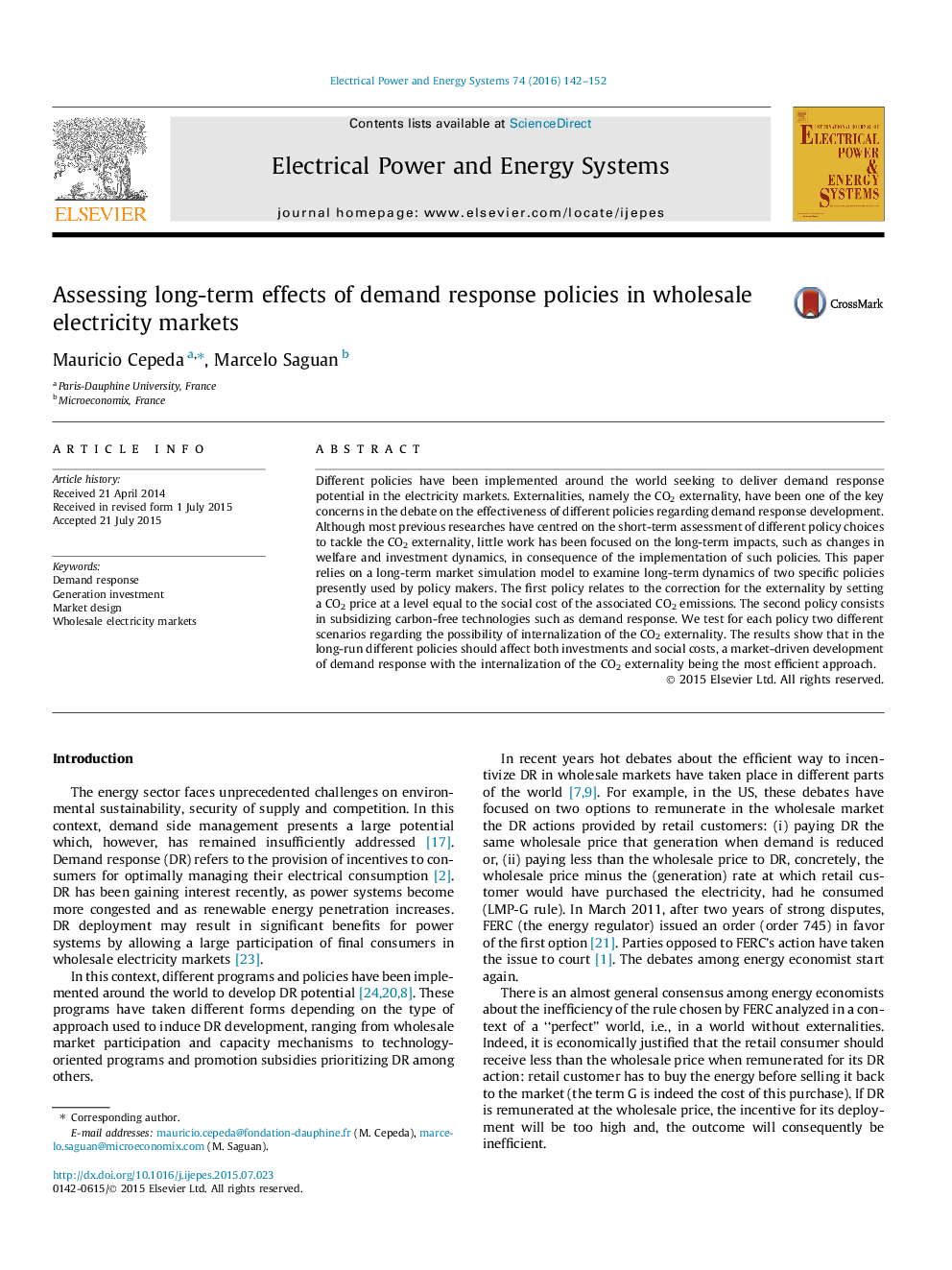| Article ID | Journal | Published Year | Pages | File Type |
|---|---|---|---|---|
| 6859606 | International Journal of Electrical Power & Energy Systems | 2016 | 11 Pages |
Abstract
Different policies have been implemented around the world seeking to deliver demand response potential in the electricity markets. Externalities, namely the CO2 externality, have been one of the key concerns in the debate on the effectiveness of different policies regarding demand response development. Although most previous researches have centred on the short-term assessment of different policy choices to tackle the CO2 externality, little work has been focused on the long-term impacts, such as changes in welfare and investment dynamics, in consequence of the implementation of such policies. This paper relies on a long-term market simulation model to examine long-term dynamics of two specific policies presently used by policy makers. The first policy relates to the correction for the externality by setting a CO2 price at a level equal to the social cost of the associated CO2 emissions. The second policy consists in subsidizing carbon-free technologies such as demand response. We test for each policy two different scenarios regarding the possibility of internalization of the CO2 externality. The results show that in the long-run different policies should affect both investments and social costs, a market-driven development of demand response with the internalization of the CO2 externality being the most efficient approach.
Related Topics
Physical Sciences and Engineering
Computer Science
Artificial Intelligence
Authors
Mauricio Cepeda, Marcelo Saguan,
